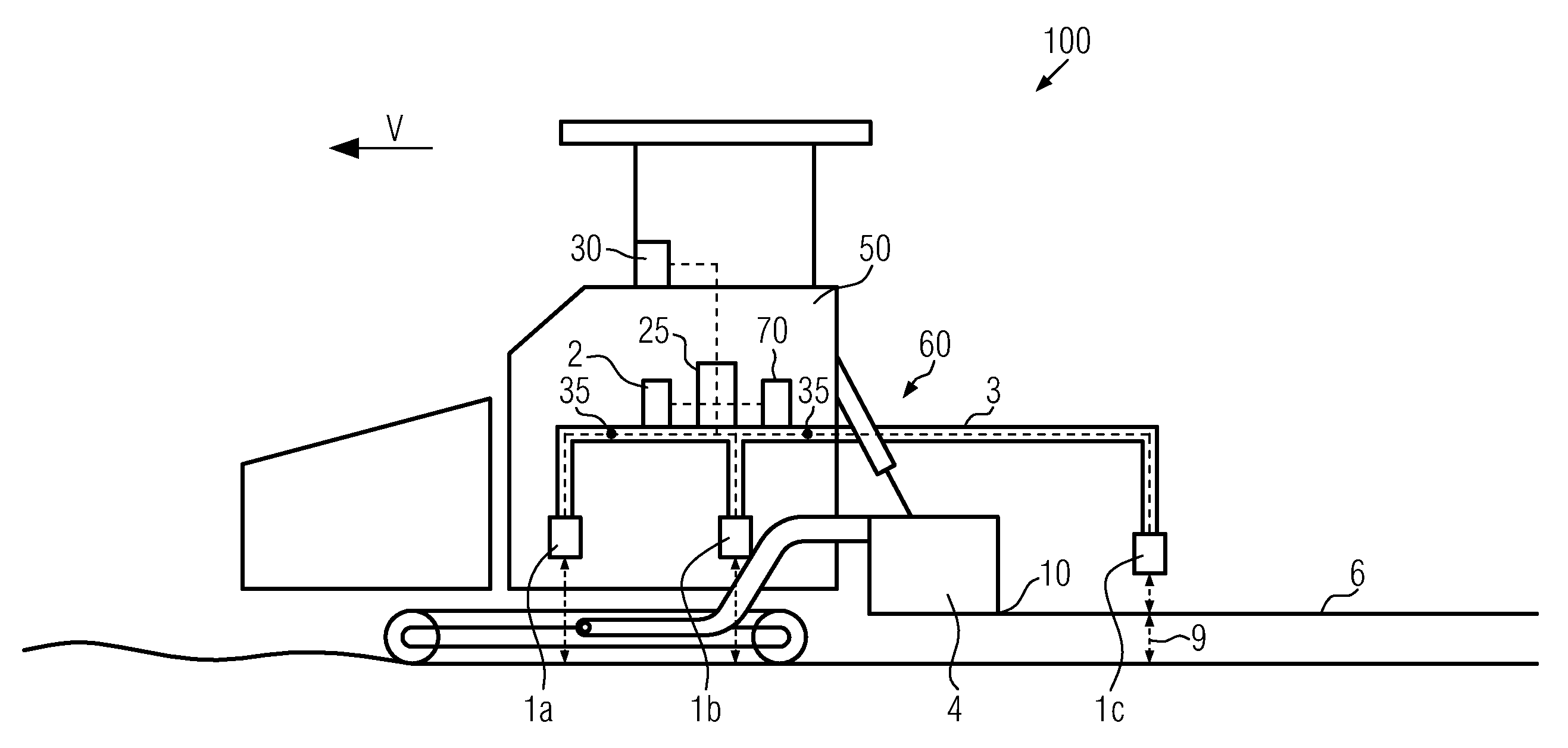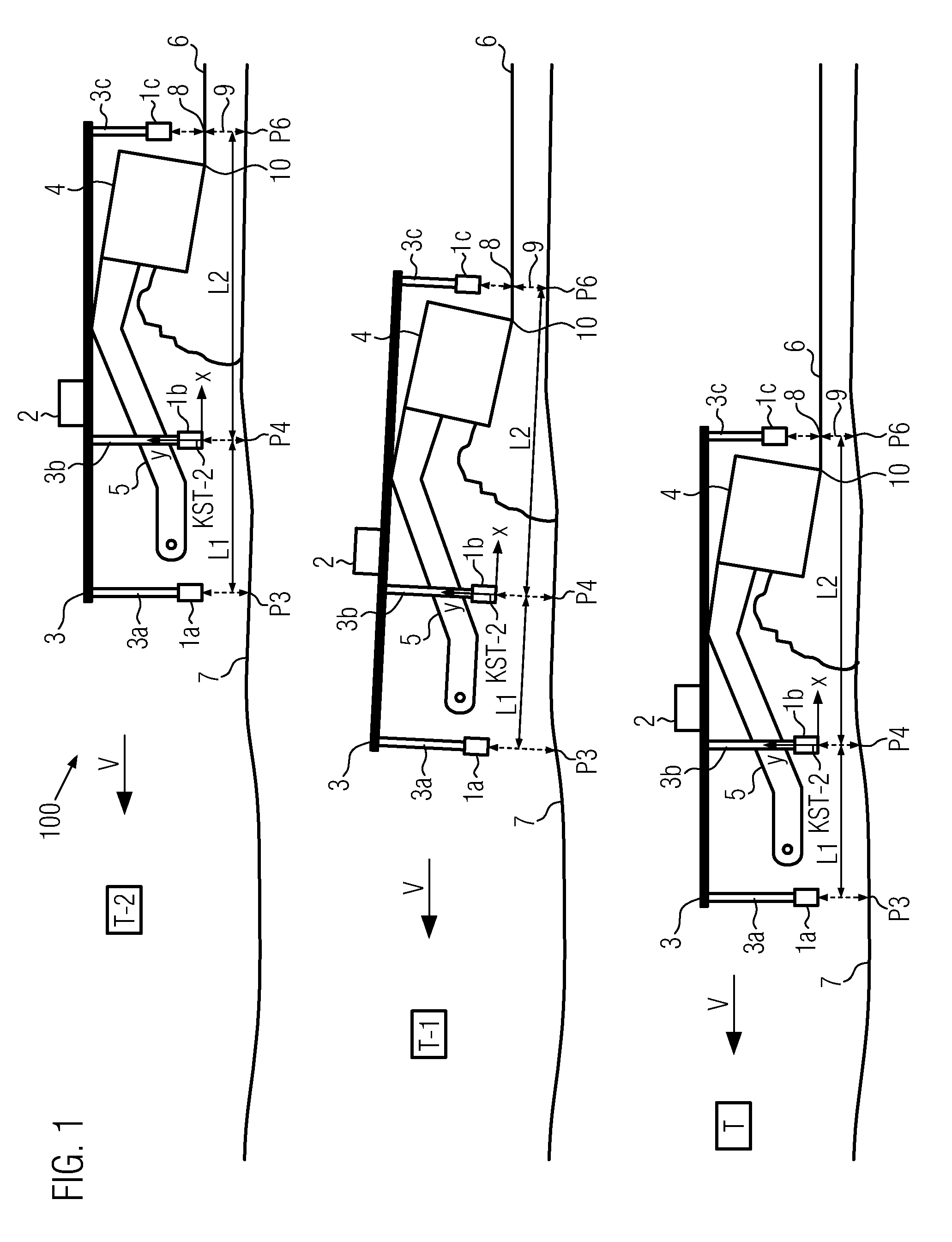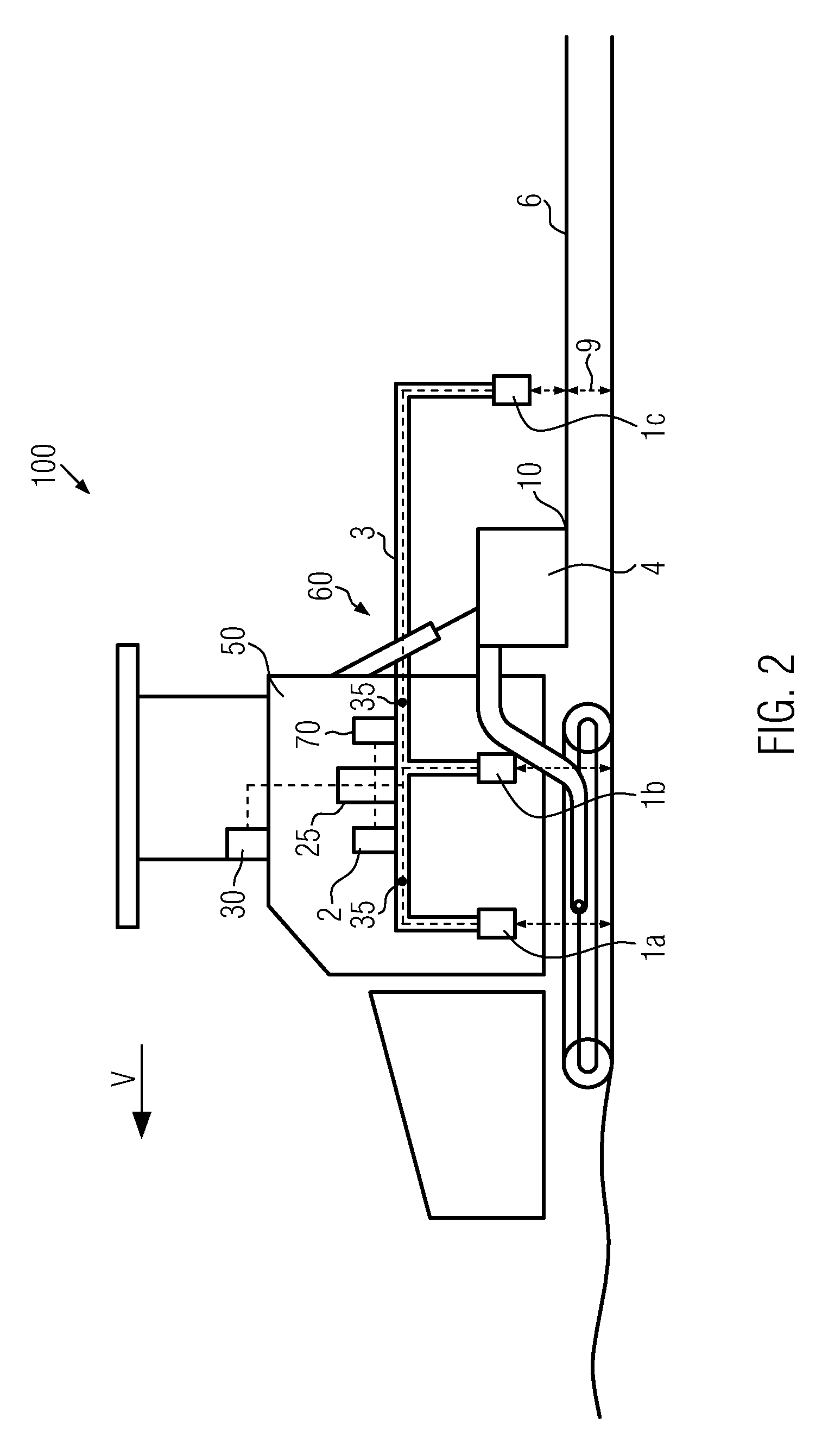Road paver with layer thickness measuring device
a technology of layer thickness and measuring device, which is applied in the field of road pavers, can solve the problems of uneven layer thickness, high production cost, and uneven layer thickness, and achieve the effects of avoiding delays, reducing production cost, and reducing production cos
- Summary
- Abstract
- Description
- Claims
- Application Information
AI Technical Summary
Benefits of technology
Problems solved by technology
Method used
Image
Examples
Embodiment Construction
[0042]FIG. 1 shows a measuring device 60 that is depicted at different points in time T, T-1 and T-2 along a direction of travel V. The measuring device is arranged rigidly on a road paver 100, particularly on its towing machine 50. The road paver 100 is only suggested in FIG. 1, but is shown in FIG. 2. The road paver 100 moves along the direction of travel V on a subgrade 7 onto which the material for the new road pavement layer is to be laid. As shown by FIG. 1, the subgrade 7 has a wavy surface which causes the towing machine 50, including the measuring device 60 rigidly mounted upon it, to tilt back and forth along the paving section. The newly driven road pavement 6 forms a new driving surface whose layer thickness 9 can be determined by the measuring device 60 during the paving run of the road paver 100.
[0043]The measuring device 60 comprises a mounting element 3, which is aligned essentially horizontally with respect to the subgrade 7. The mounting element 3 can be present in...
PUM
 Login to View More
Login to View More Abstract
Description
Claims
Application Information
 Login to View More
Login to View More - R&D
- Intellectual Property
- Life Sciences
- Materials
- Tech Scout
- Unparalleled Data Quality
- Higher Quality Content
- 60% Fewer Hallucinations
Browse by: Latest US Patents, China's latest patents, Technical Efficacy Thesaurus, Application Domain, Technology Topic, Popular Technical Reports.
© 2025 PatSnap. All rights reserved.Legal|Privacy policy|Modern Slavery Act Transparency Statement|Sitemap|About US| Contact US: help@patsnap.com



